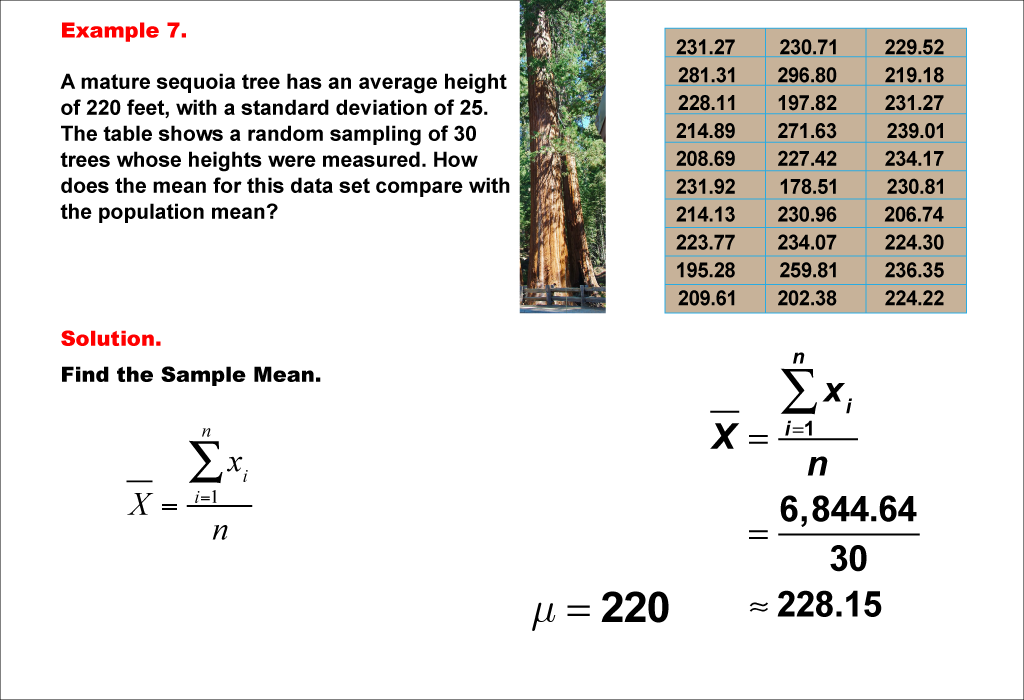
Display Title
Math Example--Measures of Central Tendency--Sample Mean--Example 7
Display Title
Math Example--Measures of Central Tendency--Sample Mean--Example 7

Topic
Measures of Central Tendency
Description
This example demonstrates the calculation of the sample mean for a group of 30 mature sequoia trees. The image presents a table showing the heights of these trees, along with the formula for computing the sample mean. The population of mature sequoia trees has an average height of 220 feet with a standard deviation of 25 feet. By summing all the heights (6,844.64 feet) and dividing by the number of trees (30), we obtain a sample mean of 228.15 feet.
Measures of central tendency are crucial in statistics, providing a method to describe the typical or central value in a dataset. This collection of examples aids in teaching this topic by presenting various scenarios where the sample mean is calculated and compared to the known population mean. By using different populations (trout, macaws, elephants, and now sequoia trees), students can observe how sample means may fluctuate but generally approximate the population mean across diverse contexts and subjects of study.
Offering multiple worked-out examples is essential for students to fully grasp the concept of sample mean. Each example reinforces the calculation process while demonstrating how sample means can differ from the population mean and from other samples. This repetition helps students build confidence in their ability to calculate and interpret sample means across diverse situations, and understand the natural variability in sampling, even when dealing with large, stationary objects like trees.
Teacher's Script: Let's examine our final example of calculating a sample mean. We're now looking at the heights of 30 mature sequoia trees. How does this example differ from our previous ones? What similarities do you notice in the calculation process? Let's compute the sample mean together. How does it compare to the population mean for sequoia trees? What might explain any differences? How does this example reinforce what we've learned about sample means from our earlier examples with animals?
For a complete collection of math examples related to Measures of Central Tendency click on this link: Math Examples: Measures of Central Tendency: Sample Mean Collection.
| Common Core Standards | CCSS.MATH.CONTENT.7.SP.A.2, CCSS.MATH.CONTENT.HSS.IC.B.4, CCSS.MATH.CONTENT.HSS.IC.B.5 |
|---|---|
| Grade Range | 6 - 8 |
| Curriculum Nodes |
Algebra • Probability and Data Analysis • Data Analysis |
| Copyright Year | 2021 |
| Keywords | mean, measures of central tendency, sample mean |